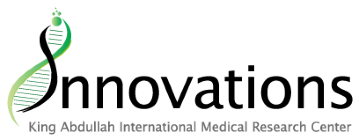
KAIMRC’s newly established cord blood bank and stem cell donor registry will not routinely test for a certain mutation linked to HIV/AIDS resistance because it’s so rare in Saudi Arabia.BSIP SA / ALAMY STOCK PHOTOtreat
A gene mutation known to confer resistance to HIV/AIDS is rarely seen among Saudi nationals, two KAIMRC-led studies have found.
Elsewhere, where the mutation is more common, cord blood banks and stem cell registries are beginning to routinely test donated samples for variants in this gene, known as CCR5. It is thought that stem cell transplantations carrying the resistance mutation could help treat HIV-infected patients. But with CCR5 mutations observed at such a low frequency in Saudi Arabia, this strategy likely makes little sense in the country, the study authors conclude.
In the first study1, a team led by KAIMRC molecular geneticist Mohammed Al Balwi sequenced all the protein-coding DNA of 321 healthy Saudis. Their long-term goal was to build a large database of normal genetic variation in Saudi Arabia to serve as a reference for future disease-related research. As a first analysis, they chronicled all the variants found in CCR5, a gene that encodes a protein found on the surface of some immune cells. This protein acts as a co-receptor for HIV entry into the immune cells.
Al Balwi and his colleagues identified 475 variants of the gene. Seven gene variations that had been previously reported were detected at very low frequency, including the ‘delta32’ mutation that, when harboured in duplicate, renders people immune to most HIV strains.
In the other study2, Al Balwi teamed up with Dunia Jawdat, lab director of KAIMRC’s cord blood bank, to test for delta32 mutations in samples collected from 2,625 healthy stem cell donors and 400 cord blood units. Although the blood bank samples contained the mutation at a slightly higher frequency than in the first Saudi cohort, the delta32 variant still only occurred in about 1% of the samples — which is at least ten times lower than the frequency seen in Europe and Western Asia.
Al Balwi surmises that the environmental factors that could have led to people carrying CCR5 mutations in other parts of the world must be lacking in the Middle East. That’s why these mutations are rarely seen today in Saudi Arabia, which means there’s an incredibly low probability of finding CCR5 mutation carriers who could serve as stem cell donors for HIV-positive patients. Accordingly, these mutations will not be routinely screened for at KAIMRC’s newly established cord blood bank and stem cell donor registry, he says.


